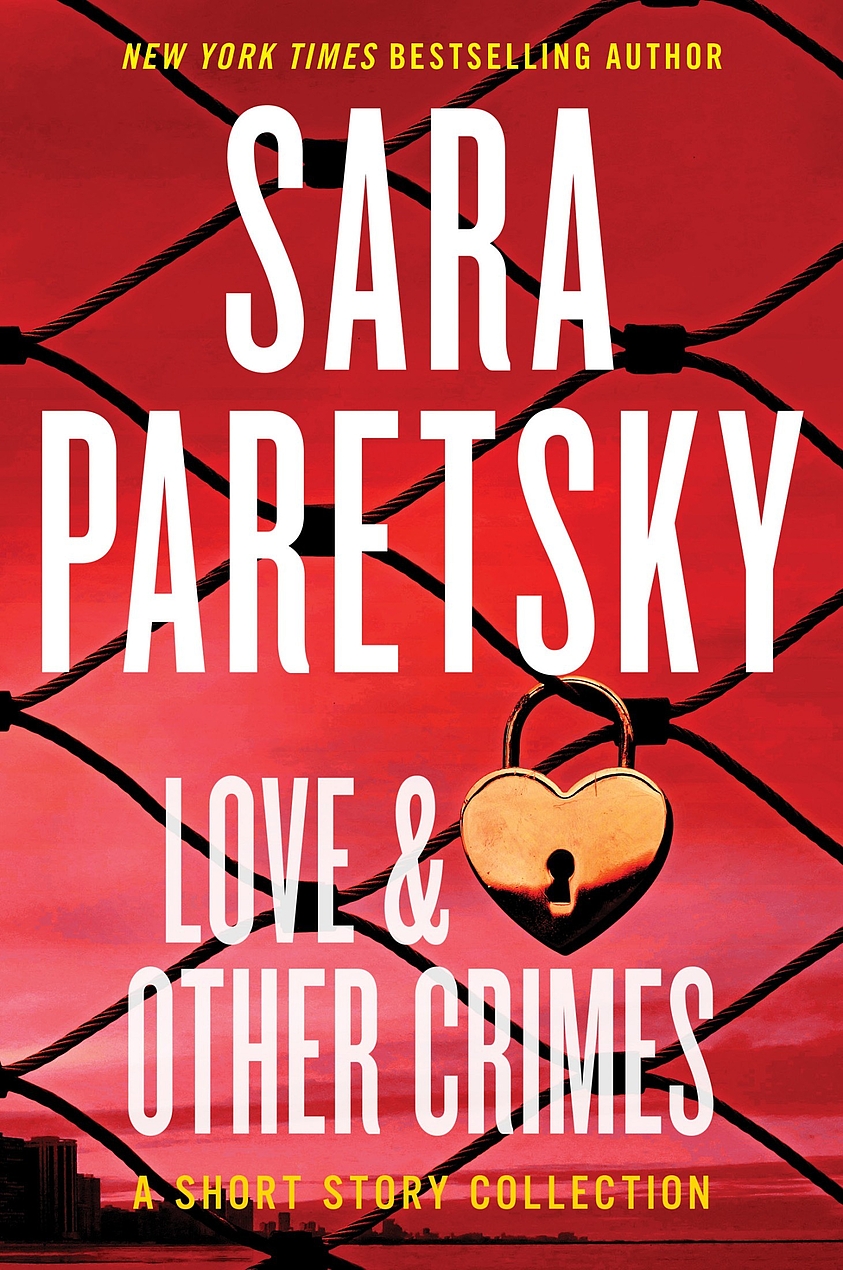
I discovered Sara Paretsky's books thanks to my mystery-loving father in law. It was 1982, I was fresh out of college, and they just blew the cobwebs off the genre. Paretsky's strong, feminist, no-nonsense V.I. was an instant role model. When my husband and I opened our bookstore Aunt Agatha's a decade later, Paretsky's books were a guiding light—I wanted a store full of books as wonderful as hers.
Twenty-three books on, V.I. and her creator are still breaking ground in Pay Dirt. This time, V.I. is a fish out of water on "holiday" in Kansas, where she stumbles upon a mystery when a college student named Sabrina goes missing. As V.I. investigates, she soon discovers a story about greed, crime, and racism rooted in centuries-old conflict.
It was a real delight that Ms. Paretsky was kind enough to answer some questions about Pay Dirt as well as about her long and accomplished career, which notably also includes the founding of Sisters in Crime in support of women crime writers and many awards, including a CWA Cartier Diamond Dagger, an Anthony Award, and an MWA Grand Master title for lifetime achievement in her craft.
Robin Agnew for Mystery Scene: Your first book Indemnity Only and Sue Grafton’s "B" is for Burglar came out the same year. When I first read them, I had just graduated from college and both V.I. and Kinsey seemed like feminist blueprints I wanted to emulate. Were you and Grafton aware of each other back then?
Sara Paretsky: Sue and I were writing before the internet and our early books had very small book runs. It wasn’t until our third books—Killing Orders for me and "C" Is for Corpse for Sue—that we learned about each other’s work. After that, we were so linked in the public mind that Sue joked that we’d been twins in a previous life.
 I feel like you laid out lots of things in Indemnity Only that you are still writing about today, but especially V.I. herself and her relentlessly intelligent and fearless personality. What have you learned about her though 22 books? Does she still surprise you? I also wonder about any blending of personalities. I know you are a writer, not a working private eye, but what qualities do you and V.I. share? In my mind’s eye she looks like you.
I feel like you laid out lots of things in Indemnity Only that you are still writing about today, but especially V.I. herself and her relentlessly intelligent and fearless personality. What have you learned about her though 22 books? Does she still surprise you? I also wonder about any blending of personalities. I know you are a writer, not a working private eye, but what qualities do you and V.I. share? In my mind’s eye she looks like you.
The biggest challenge with a long series written in the first person is to keep her as a distinct personality from my own. In the early books, she was more insouciant, but in more recent books responsibility lies heavy on her shoulders. As for her appearance, it’s fun that you think that she looks like me. My vision of her is that she’s darker because of her mother’s Italian heritage. Chatto & Windus used an Anglo-Italian model for the cover of Burn Marks, which gets her coloring right in my mind. However, this is a model and she is much too thin.
I just finished Pay Dirt and loved seeing V.I out of her element in Kansas. Can you talk about that decision?
It was hard to write about V.I. in Kansas in Pay Dirt. I’d sent her to my hometown in two other books, but there she was just gathering information about Chicago-based crimes. In Pay Dirt, the actual crimes take place in Kansas, and she’s trying to conduct an investigation without any local support. The storyline involves property disputes that date to the Civil War. I thought that it would be easier to sort those out in a small community than in Chicago where tracking 160 years of titles and neighborhood changes and political corruption would have given me a book longer than War and Peace.
All mystery novels are about a problem that must be solved. In Pay Dirt, V.I. has that mystery, but also an added challenge: She’s in a strange town with no connections or people willing to help her uncover leads. Was that a fun challenge for you as a writer?
Yes, as I mention in the previous answer, it was a challenge. I skirted it to some degree with the characters of the two men who run a scrap metal business. They are willing to help out, especially as the crime involves their own livelihood.
You address a social issues in your novels. In this case, the historic reach of racism as it existed then and still exists today. It’s heartbreaking to read about how the world has changed—but not enough. Can you talk about the research for this part of your book?
Pay Dirt was actually inspired by Brent M. S. Campney’s This Is Not Dixie: Racist Violence in Kansas, 1861–1927. I grew up in Lawrence, Kansas, and we were very proud of our abolitionist history. Campney’s book was a reality check. He describes violence perpetrated on African Americans in the decades immediately after the Civil War. It took me eight full drafts of the novel before I had the right storyline, but the story itself was one that I felt impelled to tell.
 In your "Afterword" you mention that you cut out some of the historical letters you had originally wanted to include. Was that a hard decision?
In your "Afterword" you mention that you cut out some of the historical letters you had originally wanted to include. Was that a hard decision?
That was a very difficult decision. Those Civil War-era characters are very alive in my mind. I have kept all these letters, of course, and hope to use them in another project. The characters in Pay Dirt appear in Bleeding Kansas, which isn’t in the V.I. series. They also play a role in “Trial by Fire” in Love and Other Crimes.
All really good books have a blend of character, setting, and plot. To have one or two without the third makes for a flat read, but you always integrate all three. Where do you start? Do you find an issue you want to include? Do you start with a problem for V.I.?
Thank you for that good opinion. I agree with you, and I struggle to bring all these elements into what I write. Every book starts in a different place. With Pay Dirt, I started with the idea of an historic crime and built the plot and the people around that. In my previous novel, Dead Land, which is also partly set in Kansas, I started with a homeless musician whose singing haunted me.
My book club recently had a long, long discussion about the red wine glasses V.I. has of her mother’s. We felt that established her as a character. How did those glasses pop into your mind?
I can’t remember how those wine glasses came to me. They are a strange legacy to carry while you’re fleeing for your life, as Gabriella had to do. And then, as I read more WWII memoirs, I learned that most refugees had suitcases made of cardboard, and so I spent a lot of time imaging how Gabriella packed them and why they were so important to her. I have my own mental picture of them; I have never found a red wine glass that matched my image and I have searched many places.
The fact that we discussed those wine glasses for so long, means that V.I. is almost a real person to us, with her own background and experiences. That’s an amazing achievement in any kind of writing. I also think a long series allows a writer to create a character that seems very real. (I guess we have Arthur Conan Doyle to thank for that.) What are your thoughts on V.I.’s longevity, as well as the series'?
I can only write about things I care about personally. I’ve occasionally written short stories as head games, but it takes me about 18 months to write a novel. If I don’t care about the problem and the people, there’s nothing to keep me going for the length of the journey. Perhaps my own passion keeps the series fresh.
What book have you read in your life that you feel shaped you as a writer?
That’s a hard question. I’ve read many books that affect how I think about my own life and the larger world, but I’m not sure they’ve influenced me as a writer. For me, writing fiction uses a different part of the mind than I use in responding to other people’s visions. Some of the books that have moved me deeply include: The Last of the Just (André Schwarz-Bart), Wolf Hall (Hilary Mantel), and Gilead (Marilynne Robinson). As a child, my favorite writers were Laura Ingalls Wilder and Louisa May Alcott. I can still quote the opening to Little Women. I also loved Understood Betsy by Dorothy Canfield Fisher. I read this when I was seven and it was my introduction to independent women living their own lives and making their own decisions.
What’s next for V.I.?
V.I. is taking a break. Pay Dirt is so hard on her that I’m sending her to Sardinia for R&R while I write about a different person. What comes next for her could include time in Warsaw to explore her father’s family. It’s possible that she gets involved in a bison rustling scheme.
And finally, do you have a favorite of your books? I’m a big Deadlock fan myself.
Many people, including my beloved friend and mentor, the late Dorothy Salisbury Davis, like Deadlock best. My personal favorite is probably Hard Ball. The crime is set in the summer that I first came to Chicago as a volunteer in the civil rights movement and the characters, ranging from V.I.’s family to Chicago street gang members, came to life for me in a way that I sometimes struggle to achieve.
Robin Agnew is a longtime Mystery Scene contributor and was the owner of Aunt Agatha's bookstore in Ann Arbor, Michigan, for 26 years. No longer a brick and mortar store, Aunt Agatha has an extensive used book collection is available at abebooks.com and the site auntagathas.com is home to more of Robin's writing.




 I feel like you laid out lots of things in Indemnity Only that you are still writing about today, but especially V.I. herself and her relentlessly intelligent and fearless personality. What have you learned about her though 22 books? Does she still surprise you? I also wonder about any blending of personalities. I know you are a writer, not a working private eye, but what qualities do you and V.I. share? In my mind’s eye she looks like you.
I feel like you laid out lots of things in Indemnity Only that you are still writing about today, but especially V.I. herself and her relentlessly intelligent and fearless personality. What have you learned about her though 22 books? Does she still surprise you? I also wonder about any blending of personalities. I know you are a writer, not a working private eye, but what qualities do you and V.I. share? In my mind’s eye she looks like you. In your "Afterword" you mention that you cut out some of the historical letters you had originally wanted to include. Was that a hard decision?
In your "Afterword" you mention that you cut out some of the historical letters you had originally wanted to include. Was that a hard decision?
